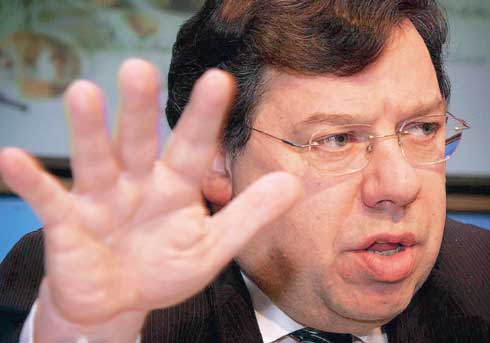 It is difficult to imagine Istanbul being any more chaotic than what hapens on the streets but the life in the news appears just as full as mayhem. There is a trial in swing of 46 people accused of plotting to overthrow the Turkish government and yesterday the judges announced they were refusing to grant them bail. The defendants, known as the Ergenekon network, all have high profiles and they include former army officers, journalists, and a retired university dean. All 46 have denied the charges and claim the trial was politically instigated by Prime Minister Tayyip Erdogan's government in order to censor its critics.
It is difficult to imagine Istanbul being any more chaotic than what hapens on the streets but the life in the news appears just as full as mayhem. There is a trial in swing of 46 people accused of plotting to overthrow the Turkish government and yesterday the judges announced they were refusing to grant them bail. The defendants, known as the Ergenekon network, all have high profiles and they include former army officers, journalists, and a retired university dean. All 46 have denied the charges and claim the trial was politically instigated by Prime Minister Tayyip Erdogan's government in order to censor its critics.The Ergenekon trial is the topic of most conversations around the city and has sharply divided opinion into three camps. Firstly there are those who support the defendants and say the case is an excuse for the Islamist government to suppress its opponents. A second group of government supporters say the suppression of the secretive Ergenekon clique is a major step in the road to enhance Turkey's democracy. The third and most cautious camp consists of the intelligentsia who believe the trial will not result in any concrete gains for democracy as the indictment for the case is weak. But everyone has an opinion. The fact the indictees include generals, journalists, business leaders and an actress means that the case has enormous cachet on the streets.
And what incredibly noisy streets they are. Trams, cars, dolmus and buses compete for space with ever industrious trolley-boys, sackmen and slack-jawed tourists straining to capture the spirit of the place with yet another photograph. The central district of Sultanahmet is almost entirely surrounded by water. The Sea of Marmara lies to the south where an enormous queue of cargo boats awaits a spot to load and unload. East is the Bosporus and Asia across the water. A steady stream of ferries take the thousands home and abroad though the toll-spanned Bosporus Bridge is eating in to their traffic. North is the Haliç – the Golden Horn which splits the two European arms of Istanbul. Here the bridges are awash with fishermen and foodstalls and a clutter of noise and energy.
Napoleon reputedly once said that if the world had a capital then Istanbul would be it. And although it is not even the capital of its own country, the Corsican genius had a good point. Not only is the city's geography illustrious, so is its history. That history is most redolent in the three buildings that dominate Sultanahmet's Bosporus shoreline, the Blue Mosque, Aghia Sophia and the Topkapi Palace.
The Blue Mosque is the colloquial name for the Sultan Ahmed (Sultanahmet) mosque and is the country's national house of prayer. It was built in the 16th century by Ahmed as the first mosque of his massive Ottoman Empire which stretched from Morocco to Persia and from Ethiopia to the gates of Venice. The mosque earned its common name thanks to the blue tiles adorning the walls of its interior.
The Ottomans had inherited the great city of Constantinople two centuries earlier when it finally ended the thousand-year reign of the Eastern Roman Empire. Back in 532, its great emperor Justinian had also ordered the construction of a great building in Istanbul to honour his deities. That building was the Aghia Sophia, which would be the largest basilica in the world for a thousand years. When the city fell to the Ottomans in 1453, it was re-consecrated as a mosque still replete with Byzantine murals. Then in 1923 Turkey's great modern secular leader Mustafa Kemal Ataturk turned it into a museum as part of his move to abolish the caliphate.
Also now a museum is the next door Topkapi Palace. Topkapi was the home of the Ottoman emperors for 400 years. It was built after the capture of the city and is a complex structure divided into four courtyards each one leading into more restricted parts of the palace. By the mid 19th century, its Asiatic style was becoming tiresome to the more sophisticated tastes of the Europeanised sultanate. They abandoned it in 1853 and Kemal Ataturk transformed it into a national museum in the 1920s.
The ghost of Ataturk still haunts the city. His image appears on many Turkish flags branding by streetsellers and hangs from the windows and from portraits on the walls of shops. Erdogan's government may have the veneer of Islamism that provoked the ire of the plotters but a strong taint of capitalist secularism lines the streets. The merchants compete on equal terms with the muezzins. Money is the real religion here.
























